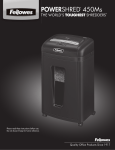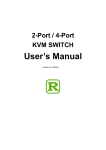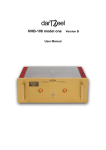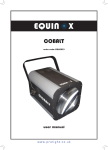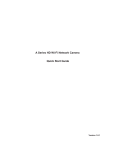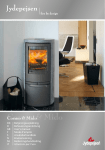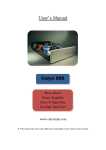Download VIDEO SEPARATOR
Transcript
9,'(2 #6(3$5$725 8VHU¶V#0DQXDO 96043; Introduction Features Specifications Installation Stand-Alone Installation Daisy-Chain Installation Preventing Radio & TV Interference Limited Warranty FCC Notice Packaging Checklist: • • • (1) (1) (1) VGA Video Separator [VS-108] Power Adapter [DC 9V 350mA(min)] Video Separator User’s Manual [This Book] 3 3 4 4 4 5 6 6 7 ,QWURGXFWLRQ The Video Separator is a signal booster and splitter that is used to take video input from a single source and direct it to eight outputs for monitors using analog signals. The signal boost obtained by using the VS-108 allows you not only to split the signal but to extend the distance that you can send the signal to about 210 feet (65 meters). This is no mean feat, your average VGA card can, over a standard VGA cable, send a clear VGA signal approximately 25 feet. This makes public broadcasts from a single computer very feasible. If you want to display the same information on many monitors at once, such as in a classroom environment, or at a demonstration, this product performs incredibly well. Bandwidth is the term that is used to describe the signal capacity of these units. In general, bandwidth is directly proportional to the amount of data transmited per unit of time. Specifically, in analog signals, bandwidth is the difference between the highest-frequency and the lowest frequency components of a given signal. For example a voice telephone signal has a bandwidth of 3000 Hz (or 3000 cycles per second), where an analog TV signal has a bandwidth of approximately 6MHZ (or 6 million cycles per second) which is approximately 2000 times greater than a simple voice phone call. These units have a bandwidth of 200MHz (which is 200 million cycles per second) and that is a little more than 33 times greater than a simple TV signal. This huge bandwidth allows for the transmission of large amounts of information at a very high rate of speed, and thus you can use the very high resolution setting of 1600 x 1200 in 24 or 32 bit true color mode at a refresh rate of 60Hz. )HDWXUHV • • • • • • One video input with either eight video outputs. Transmission distance of up to 65M (210 feet). Suitable for XGA, SVGA, VGA, and Multisync monitors. Daisy-Chain multiple units together for even more outputs. Power-save mode, when the computer is off the power indicator LED’s flash. DDC Compatible: If you connect a DDC type monitor to Video Output #1 DDC will be supported. However, All other monitors in use must support the highest video resolution that the DDC compliant monitor can provide. (DDC: This standard allows for communication between the monitor and the PC system for optimal Video Connfiguration.) IMPORTANT NOTE: • This unit is not designed for CGA, EGA or MONOCHROME type monitors or any monitor using a digital video signal. • UL-2919 rated cable is recommended for the best video quality. 6SHFLILFDWLRQV Function VS-108 DC 9V 350 mA Power Consumption 65 Meters (210 feet) Maximum Cable length Signal Type XGA,VGA, SVGA, Multisync Monitor Slide Switch Video signal Gain Control Connector – Input (1) High-Density DB-15 Connector – Output (4) High-Density DB-15 Operatin Temperature 5 degrees Celsius - 40 degrees Celsius Storage Temperature -20 degrees Celsius - 60 degrees Celsius Humidity 0% -80% Relative Humidity, Non-condensing Enclosure Metal & Plastic 1200g Weight Dimensions (L x W x H) 224mm x 152mm x 52mm ,QVWDOODWLRQ Stand-Alone Installation: 1. 2. 3. Connect the video signal from the PC’s Video output port to the Video In of the VS-138 Video Separator by using a standard VGA video cable with HDB-15 connectors. Connect the Video output from the Video Out ports of the VS-138 to you’re the input of your monitors by using a standard VGA cable with HDB-15 connectors. Connect the power supply to the VS-138 then turn the power switch on and your Video Separator is ready to go. NOTE: A slide switch, this switch is located under the Separator, is used to control the signal Gain (Also known as Power Boost). You should slide the switch toward the front panel of the unit for norman Gain levels (this setting is for short distance operation) as the distance between the Separator and the monitor increases you need to slide the switch towards the back of the unit to increase the signal Gain. WARNING: Use ONLY 9V AC in the operation of this device. Daisy-Chain Installation: 1. 2. 3. 4. 5. The VS-108 is suitable for use in any stage of the Daisy-Chain installation. Connect the Video Out port from the first Video Separator unit to the Video In of the next unit in the chain. You should use a standard VGA cable that has one male and one female HDB-15 connector. Connect the power supplies to the Video Separator units and turn the power switch on. Adjust the Gain Control Slide Switch until you are getting the best video signal. Repeat steps 1-4 to connect more Video Separators into the chain. NOTE: In an ideal world there would be no limit on the number of Video Separators that you could connect together. However, this is not a perfect world and you will notice as more Separators are added farther from the original source some signal degradation (the picture will get worse) will occur. The signal loss will continually get worse as the number of Separators and the distance from the original signal increases. Connection between VS-108s from Video Out to Video In 3UHYHQWLQJ#5DGLR#)#79#,QWHUIHUHQFH WARNING!!! This equipment generates, uses and can radiate radio frequency energy and, if not installed and used in accordance with the instruction manual, may cause interference to radio communications. This equipment has been tested and found to comply with the limits for a Class A computing device pursuant to Subpart J of Part 15 of FCC Rules, which are designed to provide reasonable protection against such interference when operated in a commercial environment. Operation of this equipment in a residential area is likely to cause interference, in which case the user at his own expense will be required to take whatever measures may be required to correct the interference. /LPLWHG#:DUUDQW\ IN NO EVENT SHALL THE DIRECT VENDOR’S LIABILITY EXCEED THE PRICE PAID FOR THE PRODUCT FROM THE DIRECT, INDIRECT, SPECIAL, INCIDENTAL OR CONSEQUENTIAL DAMAGES RESULTING FROM THE USE OF THE PRODUCT, DISK OR ITS DOCUMENTATION. The direct vendor makes no warranty or representation, expressed, implied, or statutory with respect to the contents or use of this documentation, and specially disclaims its quality, performance, merchantability, or fitness for any particular purpose. The direct vendor also reserves the right to revise or update the device or documentation without obligation to notify any individual or entity of such revisions, or update. For further inquires please contact your direct vendor. )&RWLFH This device complies with Part 15 of FCC rules. Operation of this device is subject to the following two conditions. (1) This device may not cause harmful interference, and (2) This device must accept any interference received, including interference that may cause undesirable operation. This equipment generates, uses, and can radiate radio frequency energy and if not properly installed, and used in strict accordance with the manufacturer’s instructions, may cause harmful interference to radio communication. If this equipment does produce undesirable interference with radio or television reception, the user is encouraged to try ad correct the interference by using one or more of the following measures. (The user can determine if the interference is being caused by the equipment by shutting off the equipment and checking to see if the interference is still present. Then turning the equipment back on if the interferance dissapated while the equipment was not functioning to see if the interference returns.) • • • Reorient or relocate the receiving antenna. Move the computer away from the reciever. Plug the computer into a different outlet so that the two devices are on different branch circuits. If nescessary the user should consult with either the vendor who sold the equipment or an experienced Radio/ Television technician for additional suggestions on how to reduce the interference. WARNING: “Shielded interference cable(s) must be used according to FCC Regulations Part: 15 Section: 838 Paragraph: D” The user is cautioned that changes or modifications not expressly approved by the manufacturer could void the user’s athourity to operate this equipment.









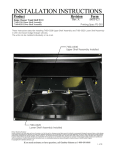
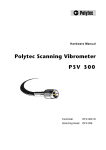

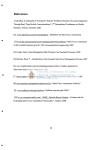
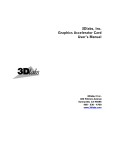
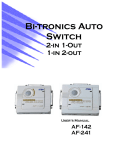

![[ENG] – User Manual](http://vs1.manualzilla.com/store/data/005641771_1-85014c30dcf830cbd17a3e8eaa623838-150x150.png)
